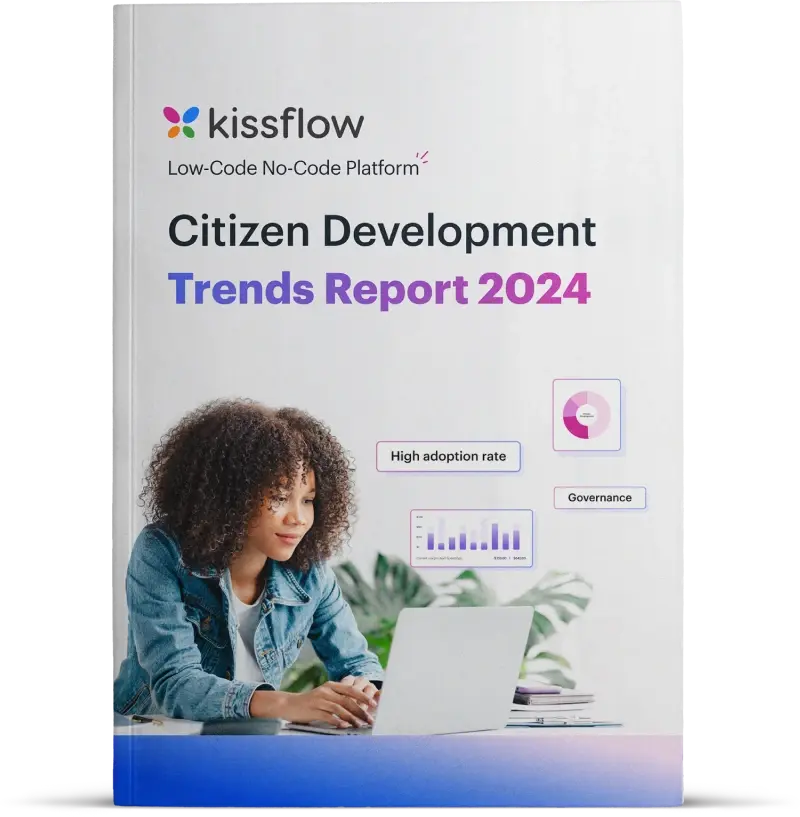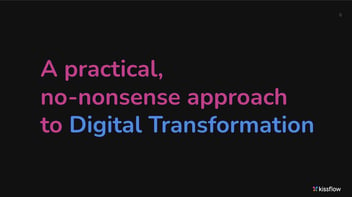Related Articles

4 MINUTES READ
15+ Banking Technology Trends to Watch Out for 2025
4 MINUTES READ
Top Healthcare Technology Trends of 2025
Team Kissflow
Updated on 3 Feb 2025 • 4 min read
BDO Global predicts that the digital oilfield market, which comprises analytics, cloud computing, and the Internet of Things, will surpass US$20 billion by 2025.
New technologies can help oil and gas companies to overcome disruptions and remain competitive in an ever-changing industry. They can optimize maintenance processes and transition smoothly towards net zero. Today, we’re looking at the top trends that will dominate the oil and gas industry in 2025.
The rush to digitize and undergo a digital transformation has forced oil and gas companies to adopt a digital-first business strategy. Low code/no code (LCNC) platforms will dominate companies’ IT stack in 2025 and beyond. Gartner reports that by 2025, 70% of new apps will be built using LCNC tools.
Low-code and no-code tools can power digital transformation efforts, allowing well-testing operators, offshore technicians, and oil field workers to build the solutions they need without waiting for IT. They can develop solutions that allow them to collaborate, track projects, and work remotely.
Companies that are quick to use LCNC platforms such as Kissflow Low Code and Kissflow No Code will be leaders in the oil and gas industry. LCNC tools enable faster application deployment and reduce process completion time.
According to Statista, the market value of automation technology in oil and gas will be around $42 billion by 2030. One of the highly adopted automation technologies is Robotic Process Automation. The technology automates repetitive and rule-based tasks such as document processing, data entry, and reporting.
When an oil and gas well is being closed, RPA significantly reduces closing time and minimizes human errors. The technology also automates supply chains such as procurement transactions, improving cycle times and boosting overall efficiency.
In 2025 and beyond, more oil and gas companies will use drones and submersible bots in offshore drilling to inspect inaccessible areas. Bots enhance worker safety and minimize errors while installing or repairing parts in dangerous locations.
AI provides powerful benefits across the value chain in energy production. Oil and gas companies use the technology to assess the value of reservoirs and customize drilling plans according to an area’s geology. It also helps them assess the risks of each well.
AI is also used during location search for oil drilling to analyze seismic data and provide risk insights. The data can be combined with historical data to help oil and gas companies determine oil levels in reservoirs. AI can enhance predictive maintenance of assets by analyzing the data from machines on offshore drilling platforms.
Machine Learning gives oil and gas companies powerful insights from the data generated during oil and gas operations. They can use the data to improve operational efficiency and decision-making. The two technologies will continue to provide powerful insights for improved efficiency, reducing disruptions across the supply chain.
IoT has created a new era of connectivity; devices and machines now communicate easily to create a more efficient and productive environment. The technology has significantly impacted the oil and gas sector, enabling businesses to optimize processes, increase safety and security, and cut costs. IoT devices such as sensors enable remote monitoring, real-time data collection, and better resource management.
In 2025, more oil and gas companies will use IoT devices to monitor pumps, pipes, and filters to avoid costly leaks. No one will have to check systems manually, so workers will only be deployed when anomalies occur. IoT sensors will provide real-time data around the clock to give workers better control of performance parameters.
Predictive analytics like variable analysis and condition-based monitoring allows oil and gas companies to design scenario-based simulations and predict future maintenance requirements. That way, they can perform required maintenance before equipment gets damaged.
The use of big data and advanced analytics will only increase from here on out. Oil and gas companies will use the two to customize predictive models and optimize drilling processes. Customized predictive models can help companies to optimize processes and improve decision-making.
It’s usually hard to verify data in the oil and gas industry as data mainly comes from subsurface facilities. Some data is also collected by human operators and may be inaccurate. Data analytics tools can pinpoint patterns among hundreds of variables in constant flux. They can enhance production efficiency, risk assessment, and operational excellence and decrease production costs.
Cloud computing puts data control in the hands of oil and gas companies. They have better analytic insights, more efficient production, and safer drilling. The technology enables companies to scale at speed and accelerate innovation, streamline operations, and become agile. Edge computing, on the other hand, enables real-time analysis of data. Oil and gas companies can use the technology for faster data processing at remote exploration, drilling sites, and distribution pipelines. They can make quick and more profitable business decisions.
A McKinsey research on the oil and gas sector revealed that oil and gas companies could cut costs by up to 25 percent per barrel if they used digital solutions like Augmented Reality and Virtual Reality. The application of AR in the oil and gas sector has shown a lot of promise. For example, AR overlays such as smart glass hardware provide visual indicators and clues to workers, helping improve their effectiveness. They also provide operation instructions for machinery and process steps. AR headsets provide hands-free instructions and display tools and parts, increasing maintenance efficiency. VR technology is equally important in oil and gas as it accelerates product design, reducing the development time of critical oil and gas equipment. It eliminates the need to manufacture different prototypes for testing. Virtual Reality enhances training, simulation, visualization, inspections, and remote assistance.
Oil and gas companies can create digital twins to replicate refinery and oilfield operations. VR headsets offer practical training, providing a safer, more efficient way to apply theoretical knowledge. Enabling developer mode on VR headsets like the Quest 2 unlocks features such as sideloading apps and customizing settings, enhancing functionality for tailored training applications."
Blockchain secures and simplifies complex oil and gas supply chain processes and introduces transparency. Processes such as oil and gas trading, inventory control, shipment tracking, and billing and payments become easier to manage.
The USA now uses a platform based on blockchain to manage crude oil deals securely. In 2025 and beyond, the technology will continue to increase transparency, security, and efficiency in transactions, supply chain management, and royalty distribution in oil and gas.
Technology is constantly changing, and oil and gas companies must keep up to stay competitive. Through process automation, they can enhance operational efficiency and achieve competitive advantage. Kissflow Low Code and Kissflow No Code help oil and gas companies to streamline their operations, lower energy costs, and reduce waste. Sign up today and start leveraging new technology trends.
.webp)
Our solution experts will connect with you to get started.


Welcome.
Let's get started.
To begin, tell us a bit about yourself
By proceeding, you agree to our Terms of Service and Privacy Policy
"The beauty of Kissflow is how quick and easy it is to create the apps I need. It's so user-friendly that I made exactly what I needed in 30 minutes."
IT Manager - SoftBank




Thank you for signing up
Someone from our team will contact you soon.

Know why all the IT leaders converging at booth #602

Get the first look at the 2024 Citizen Development report
Welcome.
Let's get started.
By proceeding, you agree to our Terms of Service and Privacy Policy
Wondering where to start?
Let's talk!
Connect with our solution experts to gain insights on how Kissflow can help you transform ideas into reality and accelerate digital transformation

This website uses cookies to ensure you get the best experience. Check our Privacy Policy
